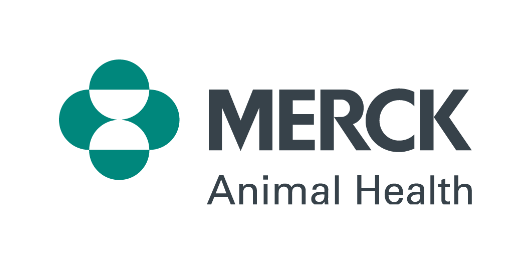Merck Animal Health Announces Launch of PORCEPTAL® as New Addition to REPROPIG® Management System in Europe
Helps Pig Producers Simplify Breeding Herd Schedules and Improve Reproductive Efficiency
SUMMIT, NEW JERSEY, May 15, 2014 – Merck Animal Health (known as MSD Animal Health outside the USA and Canada) today announced the launch of PORCEPTAL® as the newest addition to its REPROPIG® Management System in Europe. PORCEPTAL induces ovulation in pigs 30 to 33 hours after application, giving producers the ability to artificially inseminate batches of sows at one predetermined time instead of doing multiple inseminations.
By timing and synchronizing ovulation, PORCEPTAL helps producers simplify their breeding schedule and reduce the amount of time their workforce spends on heat checks and inseminations. A single insemination also allows producers to purchase less semen, but from a smaller number of higher-quality boars, which results in litters that have greater genetic uniformity. In addition, PORCEPTAL reduces the time between weaning and insemination in sows, meaning fewer non-productive days.
PORCEPTAL is the newest addition to Merck Animal Health’s reproduction health management platform REPROPIG, which also includes REGUMATE®, PG-600® and PLANATE®. PORCEPTAL is used alone in sows following weaning, but in gilts it follows a period of treatment with REGUMATE, which synchronizes estrus. In addition to this product portfolio, REPROPIG includes a web-based decision-making system that incorporates herd audits, economic data and performance results to provide customized recommendations and training to help producers meet their goals.
“Merck Animal Health is committed to providing producers with the products and services they need to manage their herds’ reproductive needs,” said Narciso Bento, Merck Animal Health. “We are pleased to announce the addition of PORCEPTAL to the REPROPIG portfolio to help producers maximize their reproductive efficiency while optimizing costs and simplifying their schedules.”
A multi-center, multi-genetic, randomized clinical trial in the EU demonstrated that PORCEPTAL achieved comparable reproductive performance in both sows and gilts, with a single artificial insemination, compared to a traditional breeding protocol with multiple heat detections and artificial inseminations, while providing all the benefits related with the reduced labor, less non-productive days and litter uniformity.i
The active ingredient in PORCEPTAL is buserelin acetate, a synthetic gonadotropin-releasing hormone (GnRH) analogue that triggers the release of luteinizing hormone (LH), thereby inducing and synchronizing ovulation. PORCEPTAL is administered via intra-muscular or subcutaneous injection.
Producers can contact their Merck Animal Health representative today to learn more about REPROPIG and PORCEPTAL.
About Merck Animal Health
Today’s Merck is a global healthcare leader working to help the world be well. Merck Animal Health, known as MSD Animal Health outside the United States and Canada, is the global animal health business unit of Merck. Merck Animal Health offers veterinarians, farmers, pet owners and governments one of the widest range of veterinary pharmaceuticals, vaccines and health management solutions and services. Merck Animal Health is dedicated to preserving and improving the health, well-being and performance of animals. It invests extensively in dynamic and comprehensive R&D resources and a modern, global supply chain. Merck Animal Health is present in more than 50 countries, while its products are available in some 150 markets. For more information, visit www.merck-animal-health.com.
Merck Forward-Looking Statement
This news release includes “forward-looking statements” within the meaning of the safe harbor provisions of the United States Private Securities Litigation Reform Act of 1995. These statements are based upon the current beliefs and expectations of Merck’s management and are subject to significant risks and uncertainties. If underlying assumptions prove inaccurate or risks or uncertainties materialize, actual results may differ materially from those set forth in the forward-looking statements.
Risks and uncertainties include but are not limited to, general industry conditions and competition; general economic factors, including interest rate and currency exchange rate fluctuations; the impact of pharmaceutical industry regulation and health care legislation in the United States and internationally; global trends toward health care cost containment; technological advances, new products and patents attained by competitors; challenges inherent in new product development, including obtaining regulatory approval; Merck’s ability to accurately predict future market conditions; manufacturing difficulties or delays; financial instability of international economies and sovereign risk; dependence on the effectiveness of Merck patents and other protections for innovative products; and the exposure to litigation, including patent litigation, and/or regulatory actions.
Merck undertakes no obligation to publicly update any forward-looking statement, whether as a result of new information, future events or otherwise. Additional factors that could cause results to differ materially from those described in the forward-looking statements can be found in Merck’s 2013 Annual Report on Form 10-K and the company’s other filings with the Securities and Exchange Commission (SEC) available at the SEC’s Internet site (www.sec.gov).
i Data on file.
